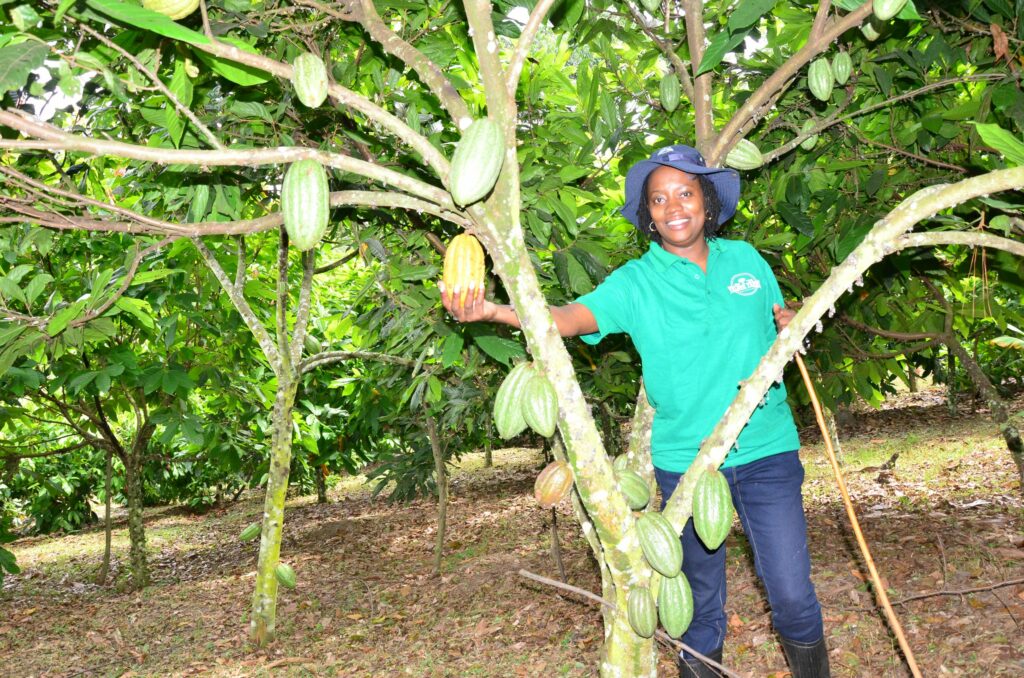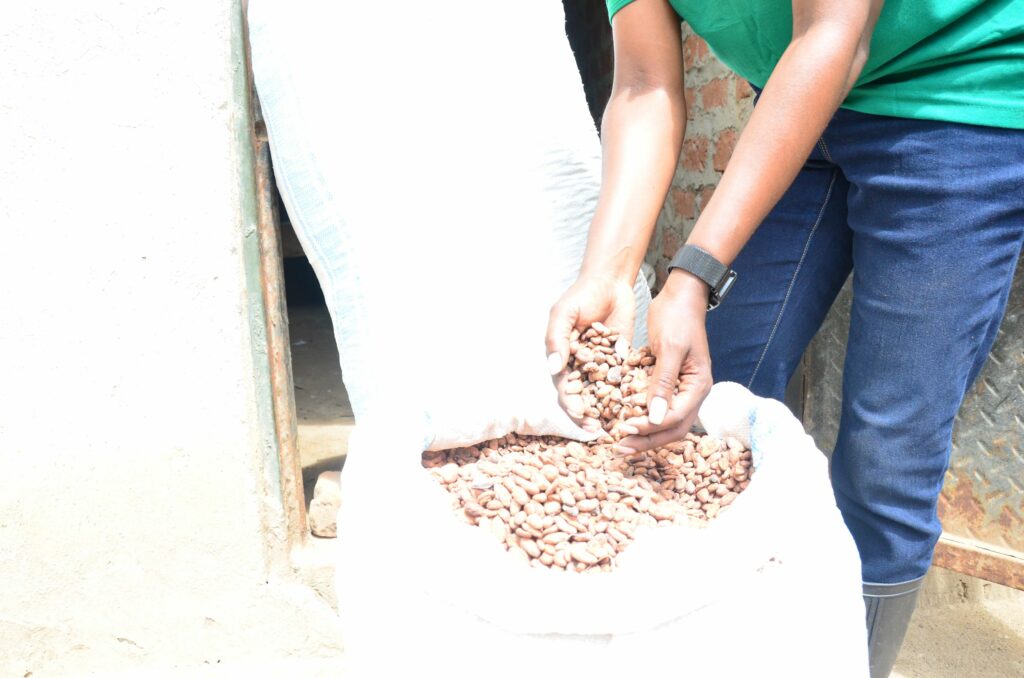By Umar Nsubuga
The cocoa aroma welcomes visitors to Lillian Kobugabe Rwomushana’s 10-acre farm.
But Rwomushana, 42, was not always a cocoa farmer.
She started as a dairy farmer.
“Diary was my life,” she says. Diary took care of all her needs. Rwomushana says it was in the early 2018 when a friend opened her eyes to the profitability of cocoa. She gave it a try and has not regretted because while dairy had ups and downs, cocoa pays her on a monthly basis.
Humble beginning
When Rwomushana set up her cocoa farm in Bibuye village, in Kyenjojo district, many scoffed at her because at the time cocoa was not grown in the district and many people were seeing it as wasteful crop.
She ventured into cocoa farming on the advice of a friend, Tom, who had attended a sensitisation workshop about cocoa’s benefits.
She started with six acres, but her cocoa farm has grown over the years and now sits on 10 acres. Today, Rwomushana is one of the big cocoa producers in Kyenjojo district.
Today Rwomushana is training, all the district agricultural officials and people about the plant, “I train for free because I want everyone to start because the market is already there”, she explains.

The proper measurements
For any farmer who is interested in cocoa growing he or she must know that the seedlings take six months to grow before they are transplanted at the onset of the first rains.
Rwomushana says the spacing is important so I encourage farmers to do the spacing of 3m x 3m (10ftx10ft) and the planting hole 2ft x 2ft deep and wide. “Manure can be applied, 435 are planted in an acre”, she advises.
Taddeo Mugisha a resident and a beginner says he started planting trees because he was advised by Rwomushana to first plant trees because cocoa trees need a shade, and he intercropped with bananas and coffee trees.
Henry Sekyewa an agronomist says interplanting cocoa with beans and Musizi trees can control wind and strong tropical sunlight at a spacing of 20ft x 20ft (32 trees per acre).
It is important to prune the cocoa tree during the early stages. Cocoa requires filtered sunlight through trees. Sustainable management of shade trees like Musizi, grumixana, sapote and breadfruit allows the farmer to earn extra income from timber and fruits. It also maintains or increases the cocoa bean production each year.
Rwomushana visits all farmers in the district to advise them, “A good caring cocoa plant starts flowering and putting on pods at two-and-half years and ripens in the third year”, she says.
According to Rwomushana many farmers need technical information, for example a cocoa tree reaches peak production in 10 years and will continue producing pods for an additional 12-13 years.
Sarah Kyomuhando another cocoa farmer Mwenge village says she got some challenges in the beginning of cocoa growing, before she met Rwomushana, she advised me that it is important to keep the cocoa plantation grounds well-weeded such that the fallen pods can be seen and collected.
Challenges
The fact that cocoa is edible exposes it to attack from squirrels, monkeys and baboons. Rwomushana gives residents free dogs which they use to patrol their plantations, but it is hard to monitor the movements of vermin, given the vast acreage of the plantation.
Humans also eat the ripe seeds. Like other crops, cocoa is attacked by pests and diseases, which cause swellings and patches on the stems.
The affected plants are cut down and burnt. Such attacks affect yields by over 60%. Rwomushana says the biggest challenge that cocoa farmers are faced with is the fluctuation of prices and exploitation by other middlemen.
Sometimes the situation is further complicated by poor harvesting methods, which are killing the market and vagaries of weather, such as drought, which affects yields.
Farmers are also looking to the Government to help them fight cocoa disease and pests, which include cocoa capsides, scale pests, aphids, snakes and squirrels.
With the cocoa boom on, theft of cocoa pods is rampant, with the thieves targeting cocoa trees located along the farm boundary or near the road.






